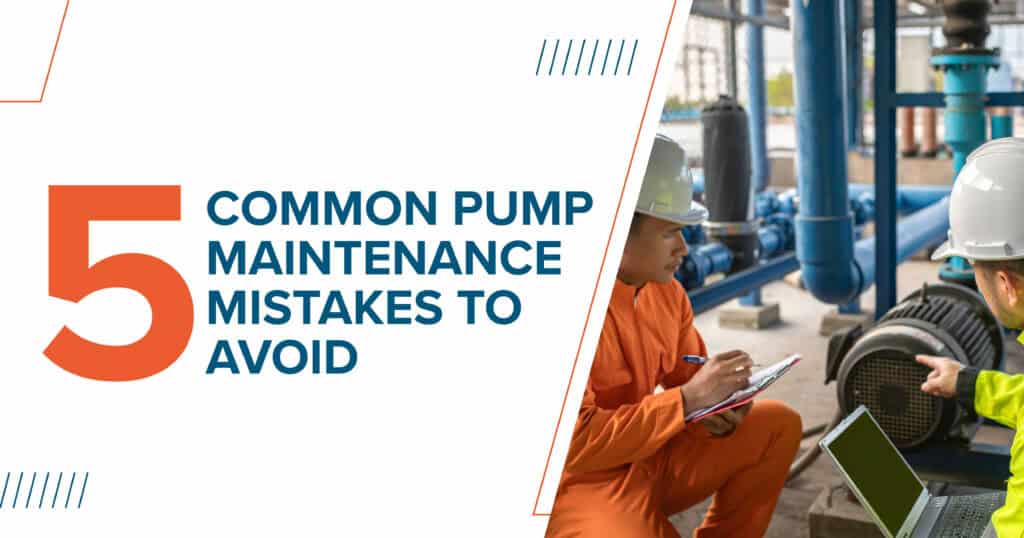Pump systems are critical components in industrial operations, yet they are often overlooked when it comes to routine maintenance. Many facilities focus on production efficiency but fail to recognize how poor pump maintenance can lead to costly repairs, unplanned downtime, and decreased operational efficiency. By understanding necessary maintenance mistakes, operators can extend the lifespan of their pumps and keep equipment running at peak performance. Below are some of the most frequent pitfalls and how to prevent them.
1. Ignoring Regular Inspections
One of the most common mistakes in pump maintenance is neglecting routine inspections. Pumps operate under extreme conditions, and small issues can escalate quickly if left undetected. Wear and tear on components such as seals, bearings, and impellers can go unnoticed until performance begins to decline or a major failure occurs.
To prevent this, facility managers should establish a preventive maintenance schedule that includes regular visual inspections, vibration analysis, and pressure checks. Early detection of minor problems allows for timely repairs and helps avoid expensive downtime. Monitoring key performance indicators such as flow rate, pressure levels, and energy consumption can also provide early warning signs of potential failures.
2. Improper Lubrication
Lubrication is essential to ensure smooth pump operation, but incorrect lubrication practices can cause more harm than good. Over-lubrication leads to excess heat and pressure buildup, which can damage bearings. Under-lubrication, on the other hand, increases friction, accelerates wear, and shortens the lifespan of rotating components.
Following manufacturer guidelines is crucial when determining the type, frequency, and quantity of lubricant to use. Using high-quality lubricants that match the pump’s operating conditions reduces mechanical stress and prevents premature failures. Additionally, maintenance teams should implement a lubrication schedule that aligns with the pump’s workload and environmental factors.
3. Running Pumps Outside Recommended Operating Conditions
Pumps are designed to operate within specific flow and pressure ranges, yet operators often push them beyond their intended limits. Running a pump at excessively high or low flow rates can result in cavitation, increased vibration, and undue stress on critical components. These conditions not only lead to inefficiencies but can also cause irreparable damage to the pump over time.
To maintain optimal performance, operators should monitor system conditions closely and make adjustments as needed. Installing variable frequency drives (VFDs) can regulate speed and flow, ensuring the pump remains within its ideal operating parameters. Regularly reviewing system demand and adjusting pump operation accordingly improves efficiency and longevity.
4. Neglecting Seal and Packing Maintenance
Seals and packing materials play a vital role to prevent leaks and maintain pressure within the system. Over time these components degrade as a result of continuous exposure to pressure fluctuations and corrosive substances. If not addressed, worn seals can cause fluid leaks, contamination, and costly environmental hazards.
Routine inspection and replacement of seals and packing materials should be a standard part of any maintenance plan. Selecting high-quality seals suited for the specific application can also improve longevity and reduce the frequency of replacements. Addressing minor leaks promptly can prevent larger system failures and avoid unnecessary downtime.
5. Failing to Align and Balance the Pump Properly
Proper alignment between the pump and motor shafts is essential for smooth operation. When alignment is off—even by a small margin—it can cause excessive vibration, increased wear on bearings, and overall inefficiency. Poor alignment is a leading cause of premature pump failure, yet it is often overlooked during installation and routine maintenance.
Using laser alignment tools ensures precision and eliminates guesswork. Alignment should be checked not only at installation but also periodically throughout the pump’s life cycle. Additionally, balancing the impeller and other rotating components minimizes vibration and mechanical stress, further extending the pump’s operational life.
Avoiding these common pump maintenance mistakes requires a proactive approach. A reliable, preventive maintenance plan is essential to keep pumps running efficiently. By investing in preventive maintenance, operators can reduce costly breakdowns, extend equipment lifespan, and ensure uninterrupted operations. If you want to optimize your pump maintenance program, contact DXP Pacific today.

